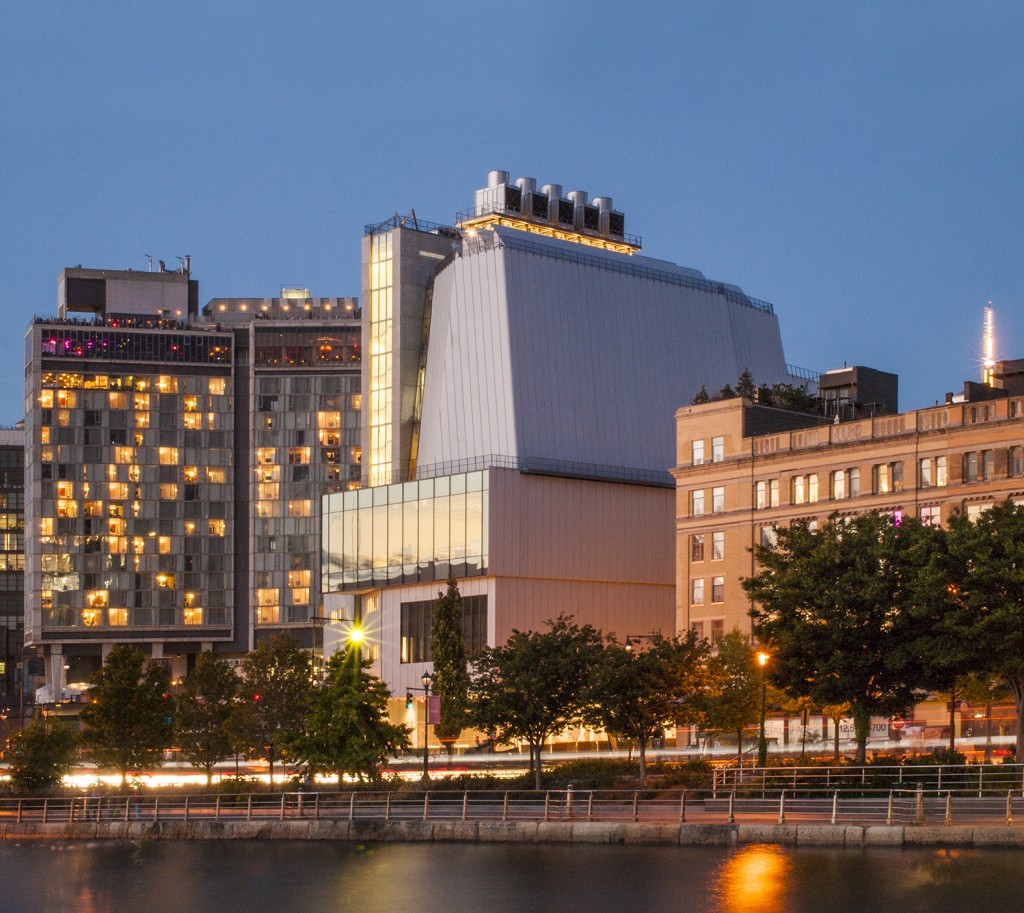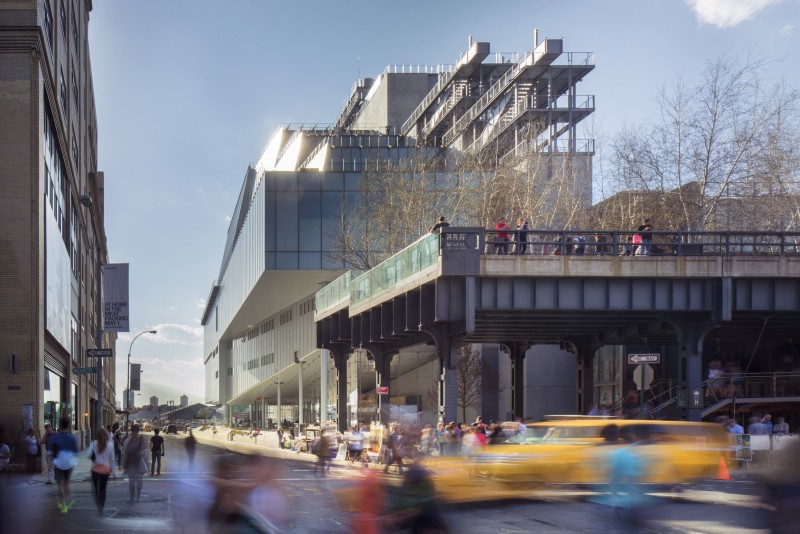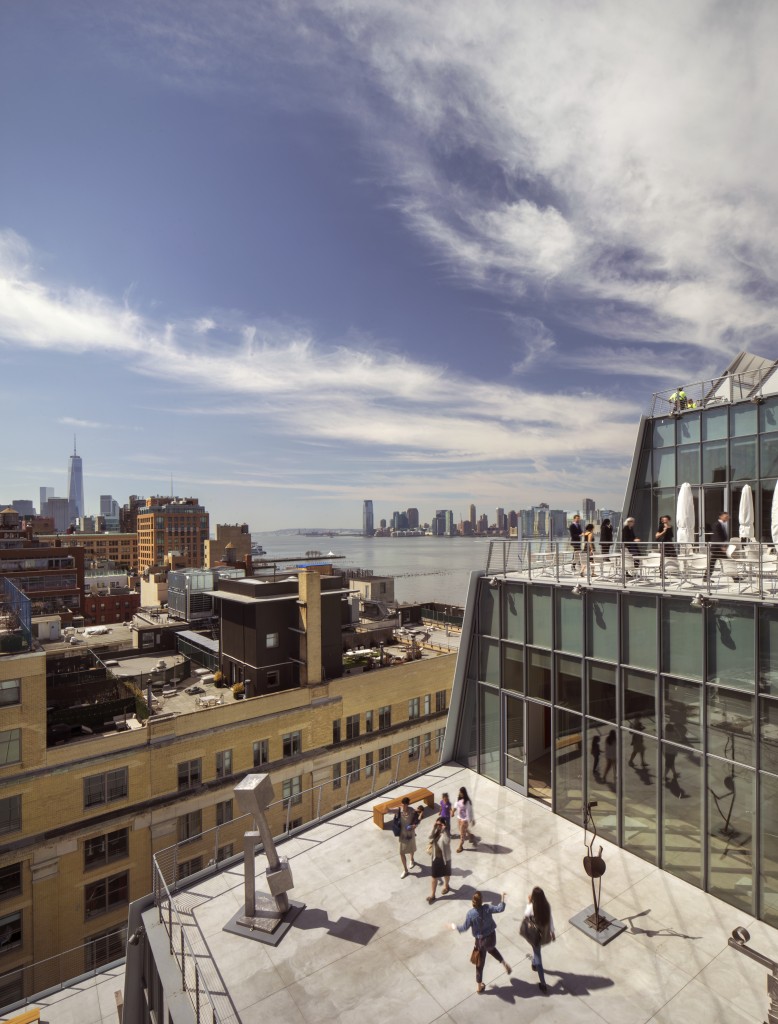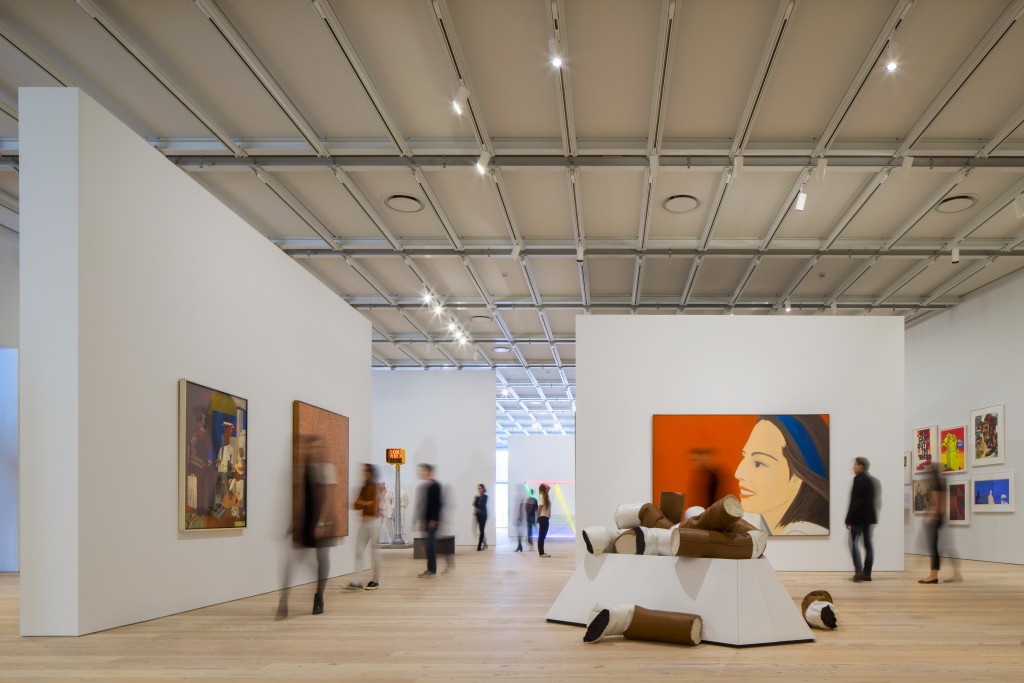On May 1, the new Whitney Museum of American Art opened its doors to the public, making a profound statement not so much about its architecture, which is exceptional, nor about the state and role of art museums in our contemporary society, but emphatically that “American art matters!”
Since the beginning of the 20th century, the “School of Paris,” with outstanding geniuses like Matisse and Picasso, has commanded the New York art world’s attention. For decades the Museum of Modern Art, under the brilliant unrelenting stewardship of its founding director, Alfred H. Barr, Jr., accorded the “School of Paris” a universal standard by which all 20th century art was measured. Concurrently, there were American painters and sculptors, some of whom studied in Paris and participated in the 1913 Armory Show which showcased the modernism of that day. However, in the wake of Barr’s canon, modernist American artists were accorded nominal status in this country and unrecognized abroad. Consequently, who needed a museum exclusively dedicated to American art? Gertrude Vanderbilt Whitney, a prominent New York socialite and art patron who, in addition, was a practicing sculptor, thought otherwise. In 1931, she established the Whitney in its first home in Greenwich Village, on the south side of 8th Street between Fifth and Sixth Avenues. Not an original structure—it was a series of three contiguous brownstones with interior spaces modified to present two and three-dimensional art. Greenwich Village, then known as the hub of American’s bohemian culture, was an appropriate location because artists, writers, musicians and intellectuals were neighbors. Through my aunt and uncle, well-regarded artists at that time, I was introduced to The Whitney in the late 1940s. At that time, I would describe its ambiance as informal, almost club like, in stark contrast to the more austere personalities of MOMA and the Met. (The buildings which served as the Whitney’s first home are now occupied by the New York School of Drawing, Painting and Sculpture.)
In its 1954 second iteration, The Whitney, with an entrance on West 54th St., was physically attached to MOMA, but independent in administration, programming and collections. Totally outclassed by its vigorous neighbor, the decision was made to move to Madison Avenue and 75th and to commission Marcel Breuer to design a new building on a grand scale. The third generation Whitney opened in 1966 and has been called home for nearly five decades. Never a fan of this brutalist inverted ziggurat, I was amazed that a museum could function in such an ill-conceived building. Traffic management is the armature of any public building. Access to upper and lower floor galleries was impeded by using a huge freight elevator that felt like a crowded subway car and moved at a snail’s pace. There is a dark, dreary stairway, connoting an unsafe environment, connecting the exhibition floors. .

Hopefully, Renzo Piano’s new downtown structure will eliminate all vestiges of this problem laden structure and give the museum’s staff opportunities to create stimulating and provocative exhibitions and activities as well as utilizing its vast collection of 21,000 works by 3,000 artists created in the 20th and 21st centuries.

Located at the southern terminus of the High Line, a brilliantly conceived and executed addition to New York’s intense urban environment, the New Whitney will benefit from this association and will contribute to the on-going conversion of Chelsea from a factory warehouse district into a vibrant cultural hub. Clearly, this will not be a museum that is aloof from its surrounding neighborhood. In choosing Chelsea as its home, the New Whitney is reestablishing a relationship with a neighborhood, much like its first home in Greenwich Village, where art and artists dominate the scene. “The Whitney Block Party” on May 2 embraced its surrounding community. Here is how it was described by the Museum: “Created in the spirit of a neighborhood festival, the Whitney Block Party will welcome visitors of all ages with free art and performance, including hands-on activities and participatory events.”

Its fourth iteration, Renzo Piano’s building with a price tag of $422,000,000, says a lot. There has to be a commanding vision to attract funding in support of a project of this magnitude. There is no question that Director Adam Weinberg and his staff have provided that vision and communicated it to both individual and corporate sponsors.

In today’s vigorously global art market, many benefactors and museum trustees view their art acquisitions as either investments or potential income tax deductions when given to non-profit organizations. Previous generations, Ms. Whitney’s among them, never viewed their acquisitions and donations in this self-enhancing light. They wanted to share the pleasure that they derived from viewing and owning paintings, drawings, prints and sculpture.
In the realm of global architectural icons, will the New Whitney rise to the status of the much acclaimed Guggenheim Museum Bilbao, a gigantic sculptural envelope designed by Frank Gehry. Like Frank Lloyd Wright’s New York Guggenheim, it has, in a sense, been designed from the outside in defying the primacy of the objects to be displayed.
Many years ago when interviewing Wright, I asked him how it would be possible to hang flat two dimensional paintings, drawings and prints oncurved walls? His succinct reply was, “It’s not my problem.”
In Renzo Piano’s New Whitney we see a building that appears to be designed from the inside out, much like his Parco della Musica in Rome, where three separate auditoriums and an open air atrium have become one of Europe’s most visited music centers. On its website, the Parco della Musica says that all of its spaces, both internally and externally, have been designed in a manner that is functionally related to music. One might say that the variegated external appearance of the New Whitney expresses a similarity in announcing that this museum is not a box in which only traditional works of art: paintings, sculpture, prints, drawings and photography, are displayed. It is also a place in which the unconventional and experimental will be welcomed, as will the surrounding neighborhood.
In the realm of New York art museums, will it rise in status, competing with behemoths like MOMA and The Met? As the new kid on the block, the New Whitney will enjoy a vigorous ride. When curiosity about the new building abates, it will be the quality of exhibitions, programs and activities created by the staff that will determine its future appraisal.
